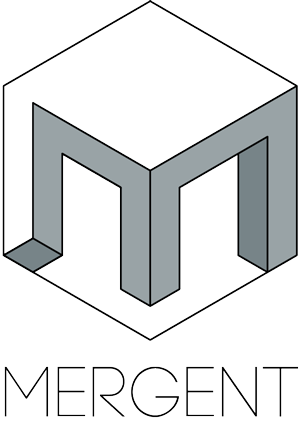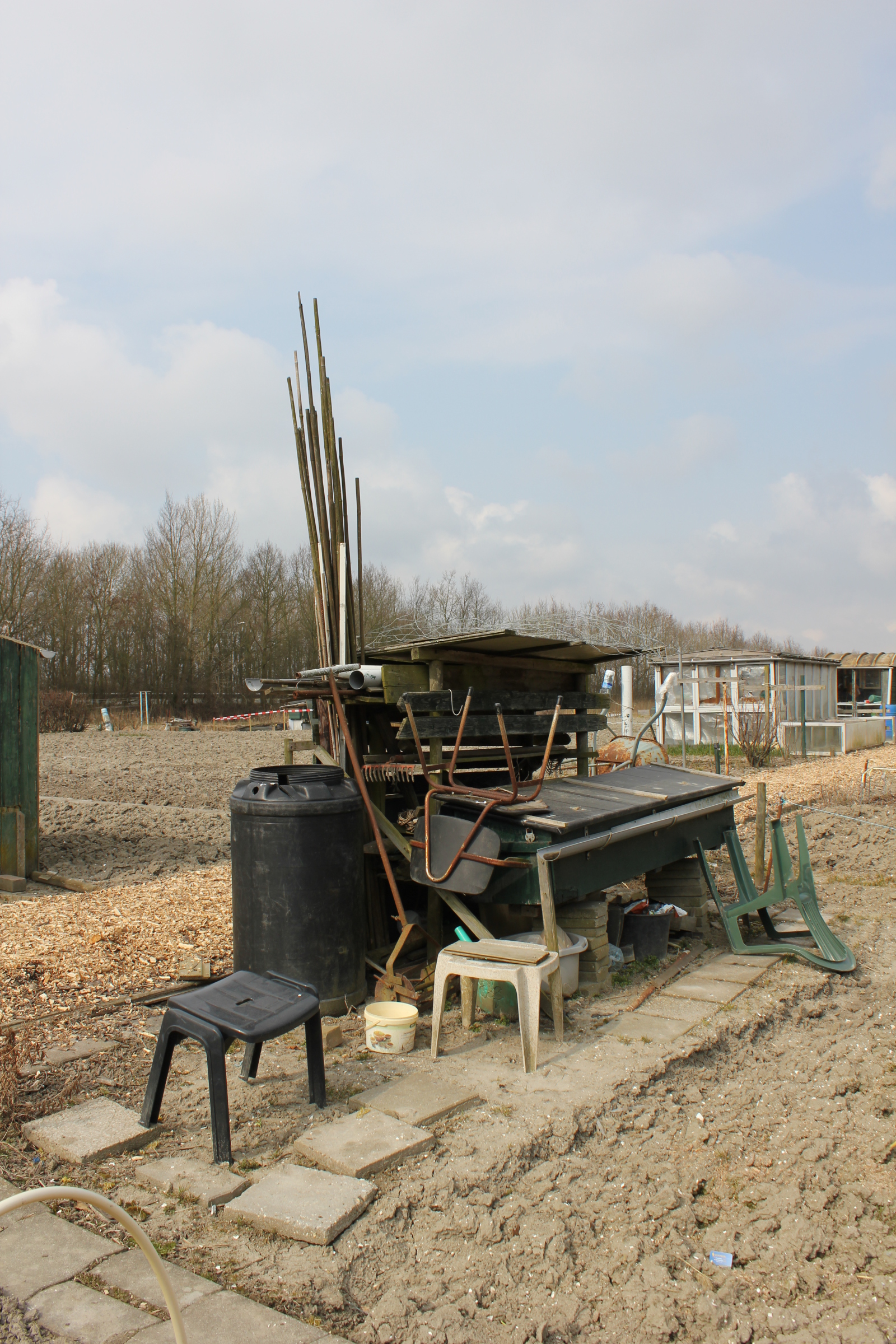This fragment is part of a series of writings that explore the concept of ‘residual space’ by method of observation, description and interpretation. They are written by doing fieldwork and documenting findings in photographs, describing what I see, looking into different characteristics that connect to the concept of residual space, open for imaginative insights they can generate.
‘IMPLICIT MACHINE’
Sites that exist on the outskirts of the city can offer fertile grounds for improvised constructions. What at first might read as a collection of waste that has no specific relation to its context, can actually connect to its environment in inconspicuous ways.
The image shows a specimen made up out of a collection of objects that adjoin to a simple wooden structure. It stands on a small lot of barren land, following a strip of sheds and shacks along a wood-chip pathway. In the background a row of bare trees make up the horizon under a cloudy sky. The specimen in the foreground is a combined configuration of stools, bins and drains that link to a small open tool shed with overlapping slanted rooftops. When I first look at the image it is unclear where the objects end and the structure begins. Does the structure become part of a new object or do objects become part of a new structure? It appears to exist as a whole, in grateful acceptance of all its attributes. The tools that cultivate the land connect to its torso as extended limbs. A watering can, rusty rake, lawn mower and wheelbarrow all become part of its combined body. Then I read the layers of individual relations to the land. At a certain point the configuration will be decomposed into its constituent parts that will all fulfil their individual task in cultivating the environment.
Yet in-between this anticipated performance and its apparent state of inactiveness, an ongoing process is concealed. In its collective form it accumulates rainwater by combining rooftop surface area with strategic placement of objects that flow into a series of small buckets and large water tank. The specimen operates in permanent service of its context. It is through organization that the configuration is read as something that belongs together. All elements are closely grouped; stacked against, hiding underneath and swirling around a defused centre. All information is unpacked, there are no walls or other thresholds to contain it, everything is put on display. In contrast with the sheds in the background – that enclose their content behind exterior bodies – the specimen is rather space turned inside-out.
DS_2013







